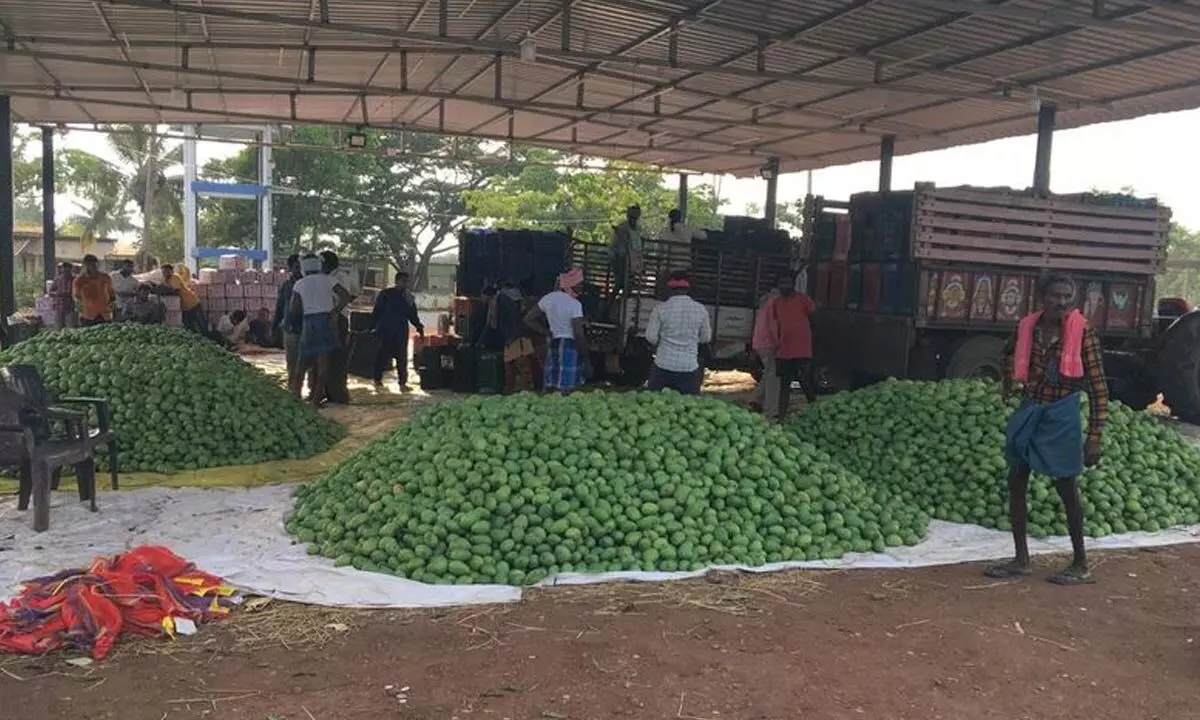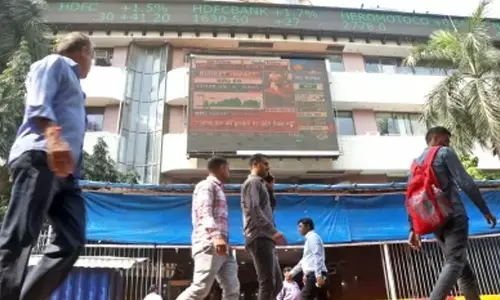Mango season starts on a bitter note

The mango harvest has been severely impacted by unfavourable weather
Khammam: The mango harvest has been severely impacted by unfavourable weather. The yields are varied from half a tonne to four tonnes per acre. Farmers experienced losses as a result of the development of salicylic disease. Mango pest has also created issues in certain places.
Every season, hundreds of mango markets are set up from the united Khammam district. Mangoes used to be exported to Hyderabad, Nagpur, Delhi, and Rajasthan by traders who would purchase thousands of tonnes of them from the markets. However, only a few marketplaces are operating in some mandals this year.
Mangoes grown in the combined Khammam district normally fetch excellent early-season prices. But, the prices have dropped by half. From the start of the season to the third week of April, the average cost of a tonne of mangoes of Banginapalli variety, which was earlier around Rs 50,000, is hovering over Rs 20,000 to Rs 25,000.
A tonne of Totapuri variety is now fetching only Rs 15,000. In addition to the fruit’s declining quality, wind and rain at the wrong time of year have caused a considerable decrease in output, thereby affecting the income of growers. Many growers believe that the reason for fall in demand is due to shifting of traders in search of high-quality mangoes produced in other regions of the state.
In several regions of our state, the acreage dedicated to mango plantations has considerably expanded. Mangoes of superior quality are being produced in Kolhapur, Tandoor, Vikarabad, and other parts of state. Furthermore, there are plantations in Andhra Pradesh’s Nujiveedu area that borders the combined Khammam district. Dejected by poor output as well as less demand for their crop, many farmers in the district are chopping the mango groves to switch to oil palm. Once, mango plantations in the joint Khammam district were spread over one and a half lakh acres, i.e., ten years ago. The acreage is currently around 42,350 acres. Currently, farmers are cultivating 31,350 acres in Khammam district and in 11,000 acres in Bhadradri Kothagudem district.














